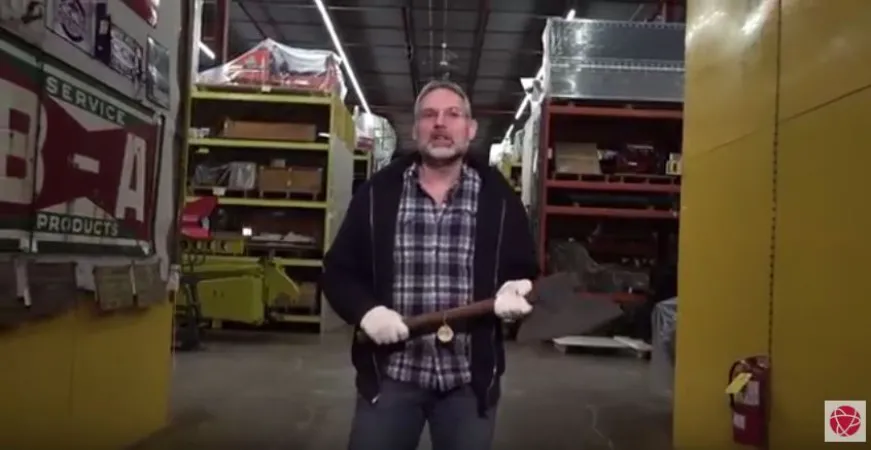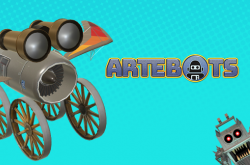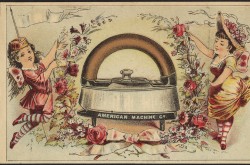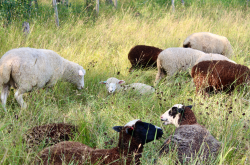Science Alive! Episode 4: Zombies at the Museum
If you were trapped in the Museums’ collection warehouse during the zombie apocalypse- what would you use to defend yourself? Dave and Museum Conservator Erin Secord examine the creepier side of the Museums’ collection in this special, zombie-themed episode.
Transcript
Dave: It’s something we all need to prepare for, the potential for a zombie attack. How can the collection at the Canada Science and Technology Museum help us survive? Find out, in this edition of Science Alive!
Dave: I’m with Erin Secord, she’s a conservator here at the Canada Science and Technology Museums and Erin, so you suggest, when the zombies attack, the best way to defend yourself is with a chainsaw.
Erin: Absolutely- line up for those zombies and take the heads right off.
Dave: So because it’s fast and quick?
Erin: Yep, it’s quick, it’s reliable, in the Museum we have over thirty so if you lose one you can always come back and get another.
Dave: And the particular good thing about this one is the blade’s already on…
Erin: Ya, the blade’s already on, and it’s made in Canada, so you know it’s going to work in our winters.
Dave: Now so what happens when the gasoline, kerosene, whatever you’re using for fuel runs out? What’s the next thing you could use?
Erin: The next thing I would come for is our collection of scythes and blades. We have a huge amount of axes in the collection. With scythes, you can get a couple feet away from that zombie and take the head right off.
Dave: Now just so everyone knows, what does a scythe look like?
Erin: A scythe has a long stick, and a curved blade. If you can imagine the Grim Reaper walking around, the scythe kind of looks like that.
Dave: Right
Erin: So you can really get some force on that thing.
Dave: So Erin we’ve learned how to protect ourselves from the Zombies, but what about us as humans, what do we need to stay alive and stay healthy?
Erin: Sure, well I imagine after the zombie attack, we’re not going to have access to our regular fire, ambulance, first aid.
Dave: Right
Erin: So the first thing I would go for after my chainsaw and my axe or scythe, would be this Civil Defence Fall Out Shelter Medical kit.
Dave: Okay
Erin: Now, maybe I’m not worried about fall out or radiation, but it does contain a lot of first aid supplies that would be useful after the Zombie Apocalypse.
Dave: And what was this box built for?
Erin: This was actually for a 300 person fall out shelter, so you can imagine during the height of the Cold War people were worried about atomic bombs dropping all over North America, so this is a kit that would be in a public building that had a fall out shelter in the basement. Its got things like phenyl barbital, swabs, penicillin, water purification tablets- all things that would be useful in a Zombie Apocalypse.
Dave: So bandages,
Erin- Yep, and cotton balls.
Dave: But this expired in 1967, so how much of it is still good?
Erin: Well a lot of the dried goods are going to be fine, I’d probably steer clear of the phenyl barbital..
Dave: Right
Erin: You know, 50 years expired, but I think a lot of the supplies here are useful, they’re also packed and ready to go. You can just throw them in your grab bag and you’d be out of the way and clear of zombies!
Dave: So this box is fully tightly packed, there’s not a square inch of space left in there?
Erin: Yes, it’s pretty tightly packed. We’ve never opened it, but we have studied it with the lid closed. We actually took a bunch of x-rays of the inside, to make sure nothing was broken and it’s fully intact, never been touched!
Dave: Awesome there you go! Some practical advice on what to do when the zombies attack with Erin Secord, she’s a conservator here at the Canada Science and Technology Museums. Thank you Erin!
Dave: Thank you Dave!




















